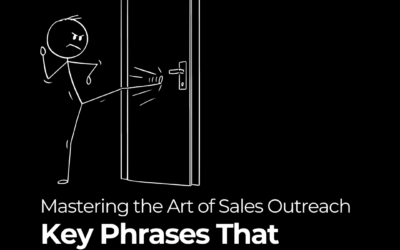Sales Objections Are Often Just Marketing Gaps in Disguise
Sales Objections Are Often Just Marketing Gaps in Disguise
In the ever-evolving landscape of sales and marketing, one truth is becoming more apparent: sales objections are often just marketing gaps in disguise. What appears to be a sales problem is frequently a symptom of misaligned messaging, lack of clarity in positioning, or a missing bridge between what marketing promises and what sales delivers.
This article explores how businesses can transform objections into powerful insights, align their sales and marketing efforts, and ultimately create a frictionless buyer journey. Let’s dive into the core reasons why objections surface and how proactive marketing can eliminate them before the sales conversation even begins.
The Root of Most Sales Objections: Marketing Misses
1. Objections Reveal Messaging Gaps
When prospects ask, “Why is this better than [competitor]?” or “Is this really worth the price?”, they’re not just being difficult — they’re showing that your value proposition isn’t coming through clearly.
These objections are signs that your marketing content isn’t answering the fundamental questions buyers have during their decision-making process. If they’re left wondering why your product matters, your marketing hasn’t done its job.
2. Marketing Can Preemptively Handle Objections
The best sales teams don’t work in a vacuum — they work alongside marketing to build trust before a conversation even starts. Marketing can and should:
- Address pricing concerns with ROI-driven content
- Clarify the differentiators between your product and competitors
- Showcase testimonials and use cases for social proof
When done right, marketing becomes your first line of objection handling, warming up leads with the information they need to feel confident.
3. Sales and Marketing Must Co-Create Messaging
Often, marketing develops messaging from the top down — without ground-level insights. But sales reps are in the trenches every day. They know what real prospects say, think, and fear.
Without collaboration, marketing creates content that sounds good — but doesn’t stick. Sales ends up reacting to objections instead of controlling the narrative.
How to Close the Gap Between Sales and Marketing
Let’s look at some actionable strategies to bridge the gap and turn objections into growth opportunities:
✅ Establish a Real-Time Feedback Loop
Sales reps hear objections daily. This feedback is pure gold for marketing. But if that insight only gets shared once per quarter (or worse — never), marketing misses its chance to adapt.
Create a system for:
- Weekly or bi-weekly syncs between sales and marketing
- A shared objection-tracking sheet or CRM field
- Voice-of-customer insights that shape new campaigns
✅ Turn Objections Into Marketing Assets
Recurring objections are your content roadmap. Here’s how to turn common objections into powerful content:
| Objection | Marketing Asset |
|---|---|
| “It’s too expensive” | ROI calculator, pricing breakdown page, value-focused case study |
| “We already use [competitor]” | Competitive comparison guide, feature matrix, customer migration story |
| “Not sure it’ll work for us” | Industry-specific use cases, tailored testimonials, product demo videos |
✅ Align Messaging Across the Funnel
Your website, email campaigns, paid ads, and sales decks should all echo the same story. When each touchpoint tells a slightly different tale, confusion (and objections) follow.
Make sure everyone is singing from the same songbook:
- Use shared messaging guides between teams
- Audit funnel content quarterly for consistency
- Focus on clear, benefit-driven language
“Confusion kills conversion. Clarity builds confidence.” – April Dunford, Positioning Expert
Case Study 1: Closing the Pricing Objection
Company: SaaS productivity platform
Objection: “Your tool costs more than what we use now.”
Solution: The marketing team collaborated with sales to build a case study on how a similar-sized client saved 20+ hours/month using the tool. They also built a pricing comparison sheet and calculator.
Result: Pricing objections dropped by 45% in three months, and demo-to-close rates improved by 18%.
Case Study 2: Tackling the “We Already Use [Competitor]” Pushback
Company: Cybersecurity solution provider
Objection: “We’re already using a competitor, and switching seems risky.”
Solution: Marketing and sales collaborated to create a competitor comparison matrix and ran LinkedIn ads featuring customers who had switched. They followed it up with nurture emails featuring migration success stories.
Result: Improved lead response by 32% and increased conversion rates by 24% in the competitive segment.
Real Talk: Objections Aren’t Roadblocks — They’re Clues
The strongest sales teams don’t fear objections — they mine them for insight. Every “no” reveals a gap in trust, information, or relevance. By listening closely and working with marketing, sales teams can:
- Shorten sales cycles
- Improve win rates
- Build better long-term relationships
If your team is overwhelmed by objections, take a closer look at your marketing. Are you truly answering the questions buyers have — or are you leaving it to sales to clean up?
Let your sales objections become marketing opportunities.
Final Thoughts: Build Together, Win Together
Alignment between sales and marketing is not optional — it’s essential. And it doesn’t have to be complicated. A shared Slack channel, monthly workshops, and mutual respect can go a long way.
“Creating a regular “Objection Observatory” where marketing reviews actual sales call recordings can transform your messaging approach. This direct exposure to client language helps reshape how you communicate value at every touchpoint, not just at the sales stage.” – Amanda Berlin, Fractional CMO
So, where does your team feel the biggest disconnect?
Let’s Talk



